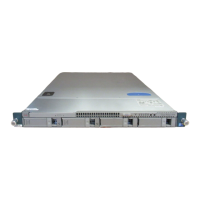22-10
Cisco Nexus 1000V Troubleshooting Guide, Release 5.2(1)SV3(1.1)
OL-31593-01
Chapter 22 System
Problems with Hosts
Problems with Port Profiles
Problems with Hosts
Problems with VM Traffic
When troubleshooting problems with intra-host VM traffic, follow these guidelines:
Symptom Possible Causes Solution
You receive an error message
“Possible failure in
communication with vCenter
Server.”
The VSM is not connected to
the vCenter Server.
Issue the svs connection vc command
to connect to the vCenter Server.
The port group name is not
unique.
Port group names must be unique
within a vCenter Server Datacenter.
Port profile or port groups do
not appear on the vCenter
Server.
— Make sure you have issued the
vmware port-group command and
state enable command.
Symptom Solution
You receive an error message, DVS
Operation failed for one or more members.”
Issue the vem status -v command to verify if the
VEM is running on the host.
Issue the vem unload command to unload the VEM.
In the vSphere Client, remove the stale DVS:
1. Go to the Host tab
Networking->Configuration->
Distributed Virtual Switch
2. Click Remove.
The host is visible on the vCenter Server, but
not the VSM.
Issue the vemcmd show trunk command to verify
that there is an uplink carrying the control VLAN.
The profile applied to the uplink must be a system
profile with a control VLAN as a system VLAN.
Verify the control VLAN in the upstream switch port
and the path to the VSM VM. Make sure that one
uplink at most carries the control VLAN, or that all
uplinks and upstream ports carrying the control
VLAN are in port channels.
A module flap occurs. The VSM may be overloaded. Make sure that you
have 1 GB of memory and CPU shares for the VSM
VM on the vCenter Server.

